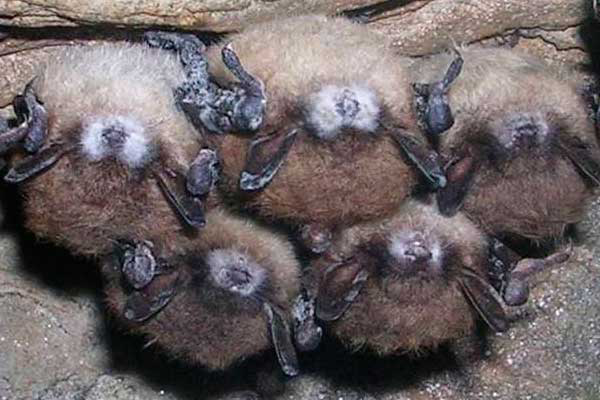Decline of the bat – major implicates for agriculture

Recently the collapse of bee colonies have been grabbing the headlines, but they are not the only at risk species which is vital to the agricultural industry, bats. Some 7 million bats have been killed in North America by White-Nose Syndrome (WNS).
Bats play a multi-billion-dollar role in agriculture. They are crucial to the ecosystem. They eat disease-carrying insects like mosquitoes and feed on crop-damaging caterpillars and worms, contributing an estimated $23 billion annually to the agriculture industry in pest control and pollination. They also pollinate certain plants.
WNS so named for the white fungus (Geomyces destructans) it leaves on hibernating bats’ noses, wings, and bodies, was first discovered in the US in a cave in the state of New York in 2006. The fungus is believed to have come from Europe where so-called Old World bats can be infected without any apparent ill-effects. Introduced into the North American bat population, though, it’s proved deadly. The fungus causes the bats to wake during hibernation, possibly expend too much energy, and ultimately starve to death
This fungal disease has spread to 22 states in America and 5 Canadian provinces, with 90% mortality rates and higher in some instances. That plus the fact that bats reproduce slowly, with only one pup per year, at best five pups in a lifetime. What’s worse, hibernating bat species have their pups while in hibernation. It’s in these caves and mines that they are most at risk for contracting WNS.
Funding has come mostly through the USFWS, but experts say much more is needed. The agriculture industry, which relies on bats, has not so far offered much of its own money or lobbied for government funds. Experts say this may soon change. Big farming states in the south and midwest are only just beginning to feel the effects of the bat crisis. So far, northeastern and mid-Atlantic states have suffered the most, along with provinces in Canada.
With so many dead bats to examine, experts are getting better at understanding the disease and documenting cases. In the end, though, more funds are required, and fast. “We’re learning a lot,” says Eileen Choffnes, Scholar & Director at the Forum on Microbial Threats at the Institute of Medicine in DC. “But it may not be sufficient to eliminate the possibility of the mass extinction of bats in North America, Canada and Mexico.”











